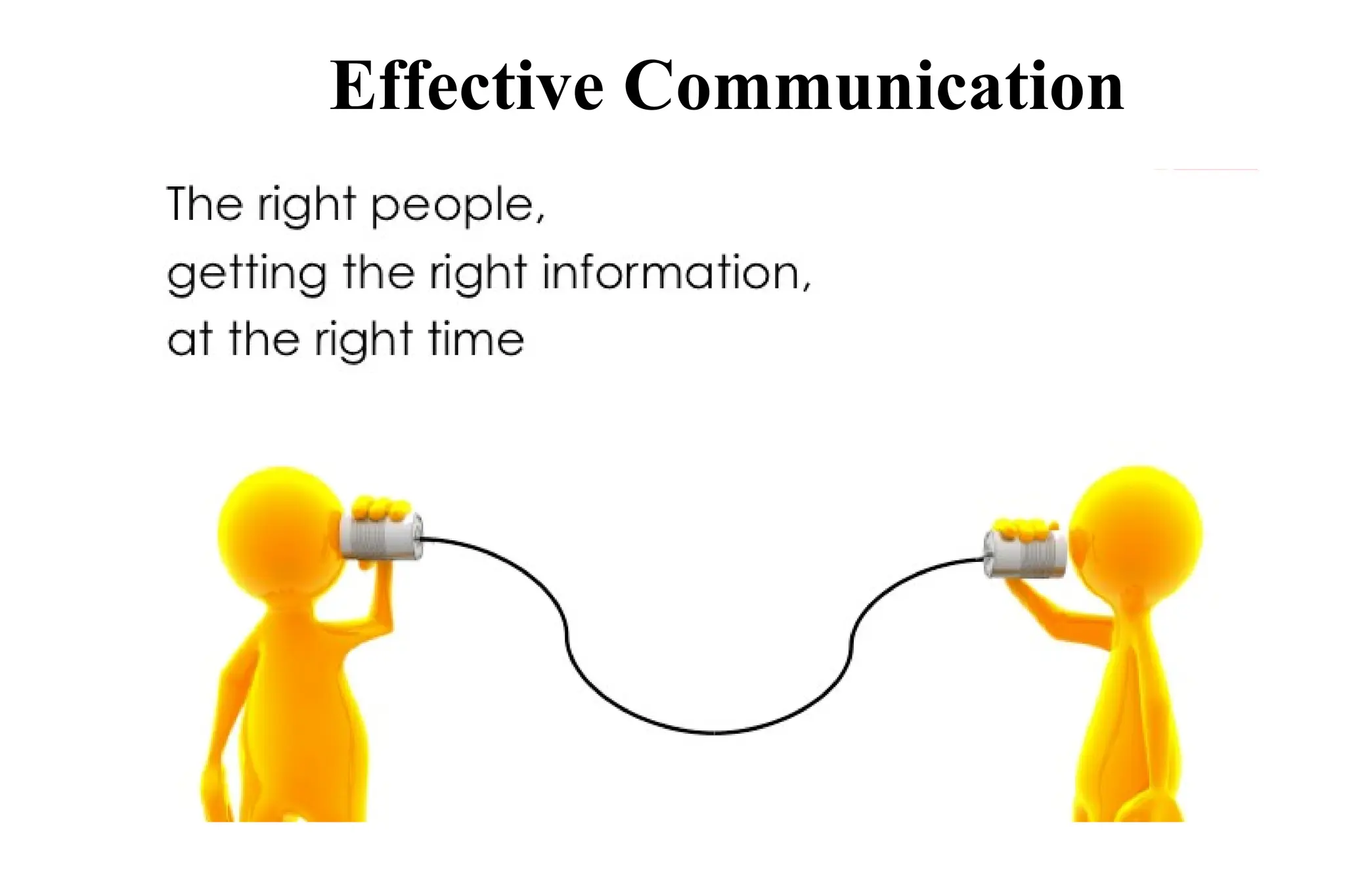The document discusses effective communication in the workplace, emphasizing the importance of verbal, written, and nonverbal communication as well as barriers that can impede understanding. It highlights the distinction between hearing and listening, outlining listening as an active skill critical to successful business relationships. Additionally, it provides practical tips for improving communication skills, including body language, active listening, and maintaining clarity and appropriate interaction.




























